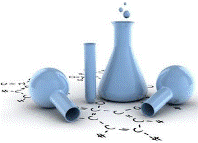Chemical and Biomolecular Engineering, Department of
Date of this Version
12-14-2021
Document Type
Article
Citation
Anal Chem. 2021 December 14; 93(49): 16409–16416. doi:10.1021/acs.analchem.1c03020.
Abstract
Change in the dynamics of single-stranded DNA or RNA probes tethered to an Au electrode on immunospecific binding to the analyte is a versatile approach to quantify a variety of molecules, such as heavy metal ions, pesticides, proteins, and nucleic acids (NAs). A widely studied approach is the electrochemical beacon method where the redox of a dye attached to the probe decreases as its proximity to the underlying electrode changes on binding. The limit of quantification (LOQ) defined by the semilog dependence of the signal on target concentration is in the picomolar range. Here, a method was studied where, by differential reflectivity, multiple reactions were measured on a monolith electrode. An alternative contrast mechanism was discovered, which led to an approach to enhance the LOQ to 10 aM and increase the dynamic range to 7 orders of magnitude


Comments
Anal Chem. Author manuscript; available in PMC 2022 August 17.